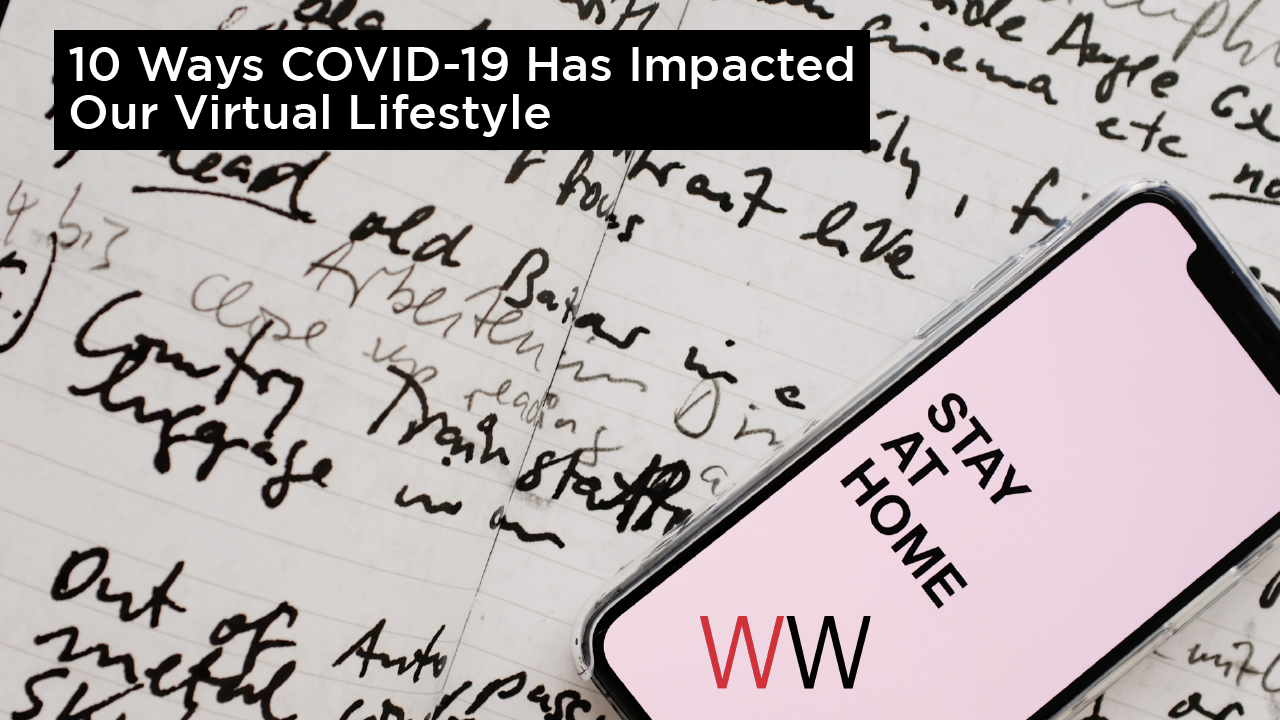By Yasmine Elnahal, Fall 2020 Intern
Williams Whittle is proud to regularly have interns join our team each season. We enjoy providing learning opportunities for them and sharing our knowledge with the next generation of advertising professionals. This Fall, Yasmine Elnahal has joined us virtually while completing her senior year with George Mason University studying marketing.
“Mask on, please” are words that only now everyone is familiar with, ever since the pandemic started and the world has been forced to change, learn and adapt to new things. It started with no handshakes and built up to total self-isolation.
1. TikTok
The use of the social platform TikTok has become a trend during this time due to the whole world quarantining themselves at home. With no activities going on outside, social media use increased by 10.5% compared to pre-COVID-19. Tiktok has around 800 million users around the world and is rising constantly, even making users out of those who previously found the platform silly and immature. This increase is because people are excited to use a new social media platform that takes their minds off of the bad media and the difficult times. It has also been a great opportunity for marketers to reach a growing audience.
2. Online Grocers and Grocery Delivery
Ever since the pandemic started and the U.S. officially declared a national emergency, people started considering other alternatives for buying their everyday goods and food. Every week, more and more people discovered the ease of ordering groceries online. By March 22, grocery online shoppers increased by 37%. After a while, most customers started depending solely on online shopping for everything, not just groceries. A study showed that 64.6% of U.S. internet users would prefer digital shopping for cosmetics and personal care over actually going to the store, 61% would prefer online grocery shopping over going to the store and 46.1% would online shop for clothing as well.
3. Advertising Spend
The year 2020 was envisioned completely different in almost all businesses’ eyes and paperwork. After the pandemic hit, businesses had no choice but to cut down unnecessary costs (at the time), such as advertising. Most businesses cut down advertising investments because even though it is thought to put them in a better position after the pandemic, it was too much to spend to survive this hard time. Travel and tourism have the highest decline of 31.2%, entertainment has a decline of 28.7% and retail by 15.2%. Traditional media is also taking a big hit. Declines include 31.6% in cinemas, 16.2% in radio and 13.8%in TV.
4. OTT TV vs. Cutting the Cord
Just like everything traditional, the use of traditional television service has been slowly declining due to the pandemic. According to a survey from Business Insider, 9.2% of the respondents already cut the cord, and as fast as canceling TV subscriptions is happening, new streaming platforms are taking their place. With a 23% increase in OTT TV watching minutes from 2019, more and more people are switching to streaming and using platforms; such as Netflix, Hulu and Amazon Prime.
5. The Cinema at Home
Many Americans are trying to find alternatives for outdoor activities in the comfort of their homes. Going to the movie theatre was one of those activities and like everything else, people found their alternative in platforms like Netflix, which saw a growth of 3 million new users from the U.S. alone. As for enjoying entertainment with a group, this has shifted to services like Facebook Watch Party which doubled interest in the service during the pandemic. According to a Variety survey, 70% of people would still choose to watch a movie at home than in theatres while 10% said they may never go to the cinema again.
6. Online Virtual Concerts
With concerts being halted due to the impossibility of social distancing, performers have started to shift to online concerts, relying on online traffic to bring in money. This has been widely accepted by most of the industry’s fans who prefer tuning into a live stream in the comfort of their homes. There has even been an increase of searches of the term “online concert” during the pandemic.
7. Radio
Due to more free time on people’s hands, there has been a 28% increase of people listening to the radio, however, due to the current regulations by the government and with most of the work being done from home, fewer people are using their car radio, so listening time in the car has decreased by 32%, while radio use on smart speakers typically associated with home use has increased by 10%.
8. Rise in E-Commerce Sales
Before COVID-19, Amazon was anticipated to collect $81.2 billion in revenue, however, due to the pandemic and people choosing a safer option for purchasing almost anything, Amazon ended up totaling $88.9 billion instead, a $7.7 billion increase.
9. Online Content Preference Change
Ever since the pandemic and news concerning health and safety has increased dramatically, entertainment content has witnessed a major spike. This can be contributed to a disinterest in the negativity of the world and a desire for a mental escape. On the other hand, content categories like fashion have witnessed a decrease in interest due to people prioritizing other things more than clothes.
10. New Ways to Meet
With restaurants and cafes being closed and social distancing becoming an absolute necessity, Americans are searching for ways to meet virtually. Apps like Houseparty, Nextdoor and Google Duo are now booming because of the pandemic. Of course, these are not the only things that changed or the only activities that were created by the pandemic, these are just a few of many more to come in this new normal. During this time, our success will be dependent on how we chose to adapt.
“All failure is failure to adapt, all success is successful adaptation.” Max McKeown.



